The easiest way to explain Integrative Medicine is to share a little of how I recently approached a new patient. She is a 33 year-old woman who has had three back-to-back c-sections that have been uncomplicated and presented to me with right sided pelvic pain. The pain was moderate to severe at times and had been going on for at least 3 months. An ultrasound done 1 month ago showed she did have a 4 cm ovarian cyst on the right side. The reason she came in was that the pain seemed to get worse over the past day and she was worried about it. A hefty dose of ibuprofen taken earlier had eased the pain, but she was still concerned. She wanted to know how long this issue might last, and if the cyst will get bigger or go away, and what caused the cyst in the first place.
After ruling out red flag symptoms that might indicate a need for additional urgent workup, I found out that my patient had symptoms of urinary frequency and has bowel movements once every 2 to 3 days. She was diagnosed with interstitial cystitis (a chronic painful inflammation of the lining of the bladder) by another physician over a year ago, but after cutting out all soda and caffeine from her diet over the past 6 months, her symptoms have significantly improved. She now drinks lots of diet cranberry juice. She no longer has bladder pain, but she still feels urge and increased frequency of urination.
Parts of my approach to this patient included educating her about how the slow stool transit time was increasing her resorption of estrogens, that normally would be eliminated in her stool. Also, having infrequent bowel movements increases inflammation in the gut and overworks the immune system, as the body has to work harder to prevent bacterial translocation. By simply improving stool throughput, her estrogen to progesterone balance could be improved (by decreasing her estrogen), which would likely then help reduce the change of forming any new ovarian cysts, and possibly even decreasing the size of the cyst she currently has. Also, I spoke to her about cutting out all diet drinks and artificial sweeteners, as these are proinflammatory.
 It takes time to explain exposure to xenoestrogens from plastics and pesticides, the physiology of the enterohepatic circulation and how steroid hormones like estrogen are eliminated from the body–and how this relates to the patient. Then there is the role of the microbiome, that either helps or hinders our physiology. For example, certain bacteria can reverse the liver’s phase II detoxification pathyways by reversing the conjugation of certain metabolites. The beautiful thing is how interconnected all the different parts of our body are, and how important the environment we live in and the food we ingest is to our well-being. Explaining this using the science that we do know, and helping patients understand it for themselves is one of my great joys of being an Integrative Physician.
It takes time to explain exposure to xenoestrogens from plastics and pesticides, the physiology of the enterohepatic circulation and how steroid hormones like estrogen are eliminated from the body–and how this relates to the patient. Then there is the role of the microbiome, that either helps or hinders our physiology. For example, certain bacteria can reverse the liver’s phase II detoxification pathyways by reversing the conjugation of certain metabolites. The beautiful thing is how interconnected all the different parts of our body are, and how important the environment we live in and the food we ingest is to our well-being. Explaining this using the science that we do know, and helping patients understand it for themselves is one of my great joys of being an Integrative Physician.
So with the above patient, there was no exact answer and no quick fix. But because I was able to explain how her different body systems worked together, and reinforce the good changes she had already made, she felt satisfied and left looking forward to making continued changes for her better health.
The time spent explaining and educating how our different organ systems work together, especially the gut, and answering her questions is what I see as ultimately making the difference in what path a patient chooses. Each patient is unique, and it is important to me to connect on a human level. We are all in the same boat together.
